#Riga 2003
Explore tagged Tumblr posts
Text
Eurovision 2003 - Number 4 - Sertab Erener - "Everyway That I Can"
youtube
This is the highest a Eurovision winner has been in my lists for a while. If there's one thing Eurovision has missed for the past four or five years, it's winner that was a hit. Sertab Erener and Türkiye provided that in 2003. Everyway That I Can came out of nowhere on the night to spring a surprise (and last minute) win, then went on to be a hit all around Europe throughout the summer.
Sertab herself was already a star in Türkiye, having had several number 1 singles and five albums, several of which were also big hits. TRT had decided to go with an internal selection in 2003 having had several years of mid-table results. While never really being in danger of relegation, TRT wanted better. Picking Sertab was an opportunity too big to miss. They went with a song written by herself and her long-time song-writing partner Demir Demirkan (former guitarist with Anatolian thrash metal band Mezarkabul).
Türkiye was a country that had stuck by its native language entirely, even when the language rule had been removed, they stayed true to Turkish. It was announced that the song would be entirely in English, there were complaints. But TRT stuck to their guns. Everyway That I Can is a dramatic, contemporary pop song with a Turkish rhythm and instrumental grace notes incorporated into something thoroughly modern.
It's stuffed full of drama, both in terms of the lyrical need for a desperate no-holds barred seduction, and in terms of the progression of the song from verse to chorus to the semi-rapped Spice Girly bridge while her dancers treat Sertab as a pink-wrapped maypole. There are plenty of opportunities for belly-dancing and hipsway. It's astonishing how well packaged the entire song is. It is everything you could wish for in a Eurovision winner.
The scoring sequence with Türkiye creeping up the board and pulling a win out of the bag in the final two votes was astonishing, and looked like it came as miraculous shock to the Turkish delegation. Their joy at winning is evident during one of the most happily celebratory reprises the Eurovision stage has seen. Türikye had finally got their first win and Sertab would forever be remembered not just in Türkiye but across Europe.
It wasn't the first time she'd tried to enter Eurovision. She'd finished third at Şarkı Yarışması 1989 and sixth in 1990. After that, her career took her to other places, but 2003 came along just at the perfect moment for her. Since then she's cemented her position in the Turkish musical world, releasing album after album and at least forty singles in total. She sings pop, traditional Turkish music, jazz and has found inspiration in the voice of Barbara Streisand.
Here she is singing Olsun with the İzmir Big Band in 2018.
youtube
#Youtube#esc#esc 2003#eurovision#eurovision song contest#riga#riga 2003#Türkiye#Sertab Erener#Demir Demirkan
7 notes
·
View notes
Text
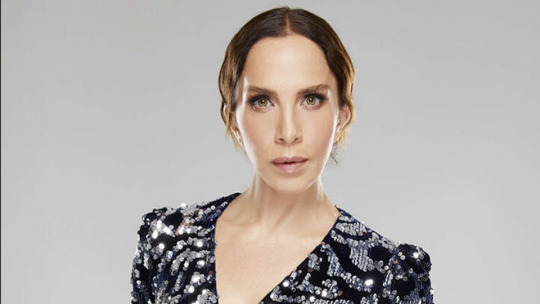
Sertab Erener
0 notes
Text
SET SIX - ROUND THREE - MATCH TWO


"Pixeles (a group of 9 works)" (Executed in 1999-2007 - Oscar Muñoz) / "Nāve (Death)" (1897 - Janis Rozentāls)
PIXELES (A GROUP OF 9 WORKS): This is Pixeles (2003) by Oscar Muñoz. Each portrait is made of sugar cubes stained with coffee, and each is a different person executed by drug cartels in Colombia. I saw this one in Houston's art museum in 2021, and I still think about it. It's made of products that tend to be mono crops, and form a significant portion of colombia's economy, depicting the violence done by the gangs and cartels who only have so much power and ability to do harm because of the harm of colonialism on the country, whose echoes can be seen in the prevalence of coffee and sugar plantations. It's a very simple piece, but it has such a strong impact, especially as someone who was consuming this piece of art in the US, as someone who benefits from the neo-imperialism that allows and even thrives on the instability and violence caused from a mono crop culture and the danger of the unregulated markets which show up around it. Ultimately the materials are very simple, but that compared with the imagery created a piece that has deeply impacted me. (travelingsmithy)
NĀVE (DEATH): The idea that death, even if a tragedy like a kids death, can be gentle makes me insane. The woman doesn’t seem scared to me and death is leaning down gently to place a kiss onto the kids temple and it makes me want to cry. The woman wearing color while the child and death wear only white to signal the end is near? FUCKING ART MAN!!! Makes me want to claw at the walls and howl in agony. (thederpclub)
("Pixeles (A Group of 9 Works)" is a coffee, sugar, and plexiglass installation done by Colombian visual artist Oscar Muñoz from 1999 to 2007. It is held at the Museum of Fine Arts in Houston.
"Nāve (Death)" is an oil on canvas painting done by Latvian artist Janis Rozentāls in 1897. It measures 69 cm (27.1 in) x 98 cm (38.5 in) and is currently located Latvian National Museum of Art in Riga.)
#art that fucks you up tournament#atfyu polls#polls#id in alt text#cw dead body#they're both death themed huh...
36 notes
·
View notes
Text
Eurovision Fact #444:
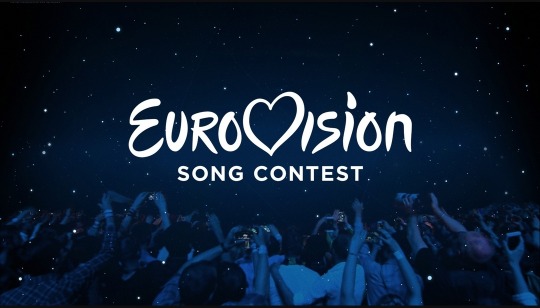
More solo artist women have won the Eurovision Song Contest than any other type of act.
Solo act women have won 37 years out of the 67 years the contest has been running. That's about 55% of the total wins. (This is counting Conchita Wurst, and counting Loreen twice for both 2012 and 2023).
Additionally, all four winners of the 1969 contest were solo act women, and Loreen won twice.
[Sources & List of Winners]
Lugano 1956, Eurovision.tv. Lys Assia 🇨🇭.
Frankfurt 1957, Eurovision.tv. Corry Brokken 🇳🇱.
Cannes 1959, Eurovision.tv. Teddy Scholten 🇳🇱.
London 1960, Eurovision.tv. Jacqueline Boyer 🇫🇷.
Luxembourg 1962, Eurovision.tv. Isabelle Aubret 🇫🇷.
Copenaghen 1964, Eurovision.tv. Gigliola Cinquetti 🇮🇹.
Naples 1965, Eurovision.tv. France Gall 🇱🇺.
Vienna 1967, Eurovision.tv. Sandie Shaw 🇬🇧.
London 1968, Eurovision.tv. Massiel 🇪🇸.
Madrid 1969, Eurovision.tv. Frida Boccara 🇫🇷, Lenny Kuhr 🇳🇱, Lulu 🇬🇧, Salomé 🇪🇸.
Amsterdam 1970, Eurovision.tv. Dana 🇮🇪.
Dublin 1971, Eurovision.tv. Séverine 🇲🇨.
Edinburgh 1972, Eurovision.tv. Vicky Leandros 🇱🇺.
Luxembourg 1973, Eurovision.tv. Anne-Marie David 🇱🇺.
London 1977, Eurovision.tv. Marie Myriam 🇫🇷.
Harrogate 1982, Eurovision.tv. Nicole 🇩🇪.
Munich 1983, Eurovision.tv. Corinne Hermès 🇱🇺.
Bergen 1986, Eurovision.tv. Sandra Kim 🇧🇪.
Dublin 1988, Eurovision.tv. Céline Dion 🇨🇭.
Rome 1991, Eurovision.tv. Carola 🇸🇪.
Malmö 1992, Eurovision.tv. Linda Martin 🇮🇪.
Millstreet 1993, Eurovision.tv. Niamh Kavanagh 🇮🇪.
Oslo 1996, Eurovision.tv. Eimear Quinn 🇮🇪.
Birmingham 1998, Eurovision.tv. Dana International 🇮🇱.
Jerusalem 1999, Eurovision.tv. Charlotte Nilsson 🇸🇪.
Tallinn 2002, Eurovision.tv. Marie N 🇱🇻.
Riga 2003, Eurovision.tv. Sertab Erener 🇹🇷.
Istanbul 2004, Eurovision.tv. Ruslana 🇺🇦.
Kyiv 2005, Eurovision.tv. Helena Paparizou 🇬🇷.
Helsinki 2007, Eurovision.tv. Marija Šerifović 🇷🇸.
Oslo 2010, Eurovision.tv. Lena 🇩🇪.
Baku 2012, Eurovision.tv. Loreen 🇸🇪.
Malmö 2013, Eurovision.tv. Emmelie de Forest 🇩🇰.
Copenaghen 2014, Eurovision.tv. Conchita Wurst 🇦🇹.
Stockholm 2016, Eurovision.tv. Jamala 🇺🇦.
Lisbon 2018, Eurovision.tv. Netta 🇮🇱.
Liverpool 2023 Eurovision.tv. Loreen 🇸🇪.
40 notes
·
View notes
Text
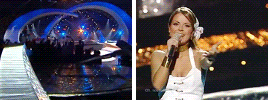
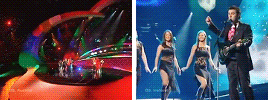
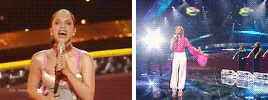






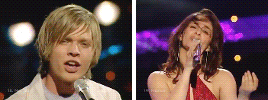


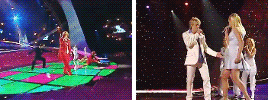
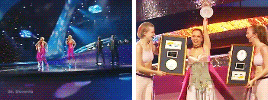
Eurovision Song Contest 2003
24 May 2003 | Riga, Latvia
A record 26 countries took part in the Eurovision Song Contest in the Latvian capital Riga. The slogan for 2003 was Rendezvous in Riga. Ukraine made its debut in the competition and sent one of the country's biggest stars, Olexandr Ponomariov. Pop duo t.A.T.u. who only month before the contest had a major worldwide hit with All The Things She Said, represented Russia in Riga. The pair caused mischief during the event week by regularly disrupting the rehearsal schedule and failing to attend press conferences. Turkey won the contest for the first time after one of the closest finishes in the contest for years. Slovenia, the last country to deliver its results, had the casting vote. Belgium finished second with Russia in third place. [eurovision.tv]
[watch the show]
#eurovision#eurovision 2003#esc#sertab erener#{year}#there are clear standout performances here#but overall - the improvement of song and performance quality over the last 2 decades is incredible#also I've never explicitly said it (although you might have noticed) but the cut off for this blog is 20 years#which yeah it's half of what it's usually considered vintage#but going back 40 years would simply limit my possible posts too much#and having a definite cutoff (for example - no entries from this millenium) didn't feel right either#I need some evolution#I know I might be getting to years you've seen as children and the label of ''vintage'' might make you feel some sort of way#but time only moves forward and we're all getting older and that's okay. we just need to learn to deal with that
20 notes
·
View notes
Text
Dalla bolla FB di Ivano Porpora
"Mi piacerebbe avere una piccola sezione dei 20, 25 libri più rappresentativi dei migliori autori in Italia; e credo che interessi anche i miei allievi, e chi mi segue.
Qui sotto la lista dei libri. Parte l'elezione de L'ALTRO LIVELLO. Potete votarne solo dieci. Se ne votate undici, cancello il vostro commento, perché state portando rumore. Il libro può anche non essere quello: ripeto, per me Nove ha raggiunto l'apice con La vita oscena.
Aldo Nove - Milano non è Milano, 2010
Alessandra Carnaroli - La furia, 2023
Alessandra Sarchi - L’amore normale, 2014
Alessandro Baricco - Mr Gwyn, 2011
Alessandro Piperno - Con le peggiori intenzioni, 2005
Alessio Forgione - Napoli mon amour, 2018
Alessio Mosca - Chiromantica Medica, 2022
Alfredo Palomba, Quando le belve arriveranno, 2022
Andrea Bajani - Un bene al mondo, 2016
Andrea Canobbio -
Andrea Donaera - Io sono la bestia, 2019
Andrea Pomella - L'uomo che trema, 2018
Andrea Tarabbia - La calligrafia come arte delle guerra, 2010
Andrej Longo - L'altra madre, 2016
Antonella Cilento, Lisario o il piacere infinito delle donne, 2014
Antonella Lattanzi - Questo giorno che incombe, 2021
Antonio Manzini - 7/72007, 2016
Antonio Moresco - La lucina, 2013
Aurelio Picca - Il più grande criminale di Roma è stato amico mio, 2020
Benedetta Palmieri - Emersione, 2021
Carola Susani - Eravamo bambini abbastanza, 2012
Claudia Durastanti - La straniera, 2019
Claudia Petrucci - L'esercizio, 2020
Claudio Morandini - Neve, cane, piede, 2015
Claudio Piersanti - Quel maledetto Vronskij, 2021
Daniela Ranieri - Stradario Aggiornato di tutti i miei baci, 2021
Daniele Del Giudice - Orizzonte mobile, 2009
Daniele Mencarelli - Tutto chiede salvezza, 2022
Daniele Petruccioli - La casa delle madri, 2020
Dario Voltolini - Le scimmie sono inavvertitamente uscite dalla gabbia, 2006
Davide Orecchio - Storia aperta, 2021
Demetrio Paolin - Conforme alla gloria, 2016
Domenico Starnone - Vita mortale e immortale della bambina di Milano, 2021
Donatella Di Pietrantonio - L’arminuta, 2017
Edgardo Franzosini - Questa vita tuttavia mi pesa molto, 2015
Edoardo Albinati - La scuola cattolica, 2016
Edoardo Zambelli - Storia di due donne e di uno specchio, 2018
Elena Ferrante -
Emanuela Canepa - Insegnami la tempesta, 2020
Emanuela Cocco - Tu che eri ogni ragazza, 2018
Emanuele Tonon - La luce prima, 2011
Emanuele Trevi - Due vite, 2020
Emidio Clementi - L’amante imperfetto, 2017
Emiliano Ereddia - Le mosche, 2021
Eraldo Baldini - L’uomo nero e la bicicletta blu, 2011
Ernesto Aloia - I compagni del fuoco, 2007
Ezio Sinigaglia - Eclissi, 2016
Fabio Bacà - Nova, 2021
Fabio Bartolomei - We are family, 2013
Fabio Geda - Nel mare ci sono i coccodrilli, 2010
Fabio Genovesi - Esche vive, 2011
Fabio Stassi - L'ultimo ballo di Charlot, 2012
Fabrizio Patriarca - Tokyo transit, 2016
Federico Platania - Il Dio che fa la mia vendetta, 2013
Filippo Nicosia - Come un animale, 2010
Filippo Tuena - Ultimo parallelo, 2007
Francesca Genti - Anche la sofferenza ha la sua data di scadenza, 2018
Francesca Manfredi - L’impero della polvere, 2019
Francesca Marzia Esposito - Corpi di ballo, 2019
Francesca Mattei - Il giorno in cui diedi fuoco alla mia casa, 2019
Francesco Dimitri - Pan, 2008
Francesco Maino - Cartongesso, 2014
Francesco Pacifico - Class, 2014
Francesco Pecoraro - La vita in tempo di pace, 2014
Francesco Targhetta - Perciò veniamo bene nelle fotografie, 2012
Franco Stelzer - Il nostro primo solenne stranissimo Natale senza di lei, 2003
Fulvio Abbate - Roma vista controvento, 2015
Giacomo Sartori - Anatomia della battaglia, 2005
Gian Marco Griffi - Ferrovie del Messico, 2022
Gianluca Morozzi - Blackout, 2004
Gilda Policastro - La parte di Malvasia, 2020
Giordano Meacci - Il cinghiale che uccise Liberty Valance, 2016
Giordano Tedoldi - Tabù, 2017
Giorgia Tribuiani - Blu, 2018
Giorgio Falco - La gemella H, 2014
Giorgio Fontana - Il mago di Riga, 2022
Giorgio Vasta - Il tempo materiale, 2008
Giovanni Dozzini - Qui dovevo stare, 2021
Giulio Mozzi - Le ripetizioni, 2021
Giuseppe Genna - Dies irae, 2006
Greta Pavan - Quasi niente sbagliato, 2023
Helena Janeczek - La ragazza con la Leica, 2017
Ilaria Palomba - Vuoto, 2022
Laura Pariani -La valle delle donne lupo, 2011
Laura Pugno - Sirene, 2007
Letizia Muratori - Casa madre, 2008
Licia Giaquinto - La briganta e lo straniero, 2014
Lorenza Pieri - Il giardino dei mostri, 2019
Lorenzo Mercatanti - Il babbo avrebbe voluto dire ti amo ma lo zio ne faceva anche a meno, 2014
Luca Ricci - Gli autunnali, 2018
Luigi Romolo Carrino - Non è di maggio, 2021
Maddalena Fingerle - Lingua Madre, 2021
Marcello Fois - Nel tempo di mezzo, 2012
Marco Balzano - Resto qui, 2015
Marco Drago - Innamorato, 2023
Marco Mancassola - Last love parade, 2005
Marco Missiroli - Atti osceni in luogo privato, 2015
Marco Peano - L'invenzione della madre, 2015
María Grazia Calandrone, Dove non mi hai portata, 2023
Maria Rosa Cutrufelli - Il giudice delle donne, 2016
Marino Magliani - Peninsulario, 2022
Mario Desiati - Spatriati, 2022
Marta Cai - Enti di ragione, 2019
Massimiliano Santarossa - Pane e Ferro, 2019
Matteo Cavezzali - Nero d'inferno, 2018
Matteo Galiazzo - Cargo, ne 2013
Matteo Melchiorre -Requiem per un albero, 2004
Mauro Covacich - La sposa, 2016
Michele Mari - Leggenda privata, 2017
Michele Orti Manara - Il vizio di smettere, 2018
Michele Vaccari - Un marito, 2018
Niccolò Ammaniti - Io non ho paura, 2001
Nicola Lagioia - La città dei vivi, 2020
Orso Tosco - Aspettando i naufraghi, 2018
Paola Barbato - Zoo, 2019
Paolo Cognetti - Sofia si veste sempre di nero, 2012
Paolo Colagrande - Salvarsi a vanvera, 2022
Paolo Giordano -
Paolo Nori - Vi avverto che vivo per l’ultima volta, 2023
Paolo Zanotti - Bambini bonsai, 2010
Paolo Zardi - Il giorno che diventammo umani, 2013
Piera Ventre - Gli spettri della sera, 2023
Piersandro Pallavicini - Atomico Dandy, 2005
Raul Montanari - Il buio divora la strada, 2002
Remo Rapino - Vita, morte e miracoli di Bonfiglio Liborio, 2019
Romolo Bugaro - Non c'è stata nessuna battaglia, 2019
Rosa Matteucci - Costellazione familiare, 2016
Rosella Postorino - Le assaggiatrici, 2018
Rossana Campo - Dove troverete un altro padre come il mio, 2015
Sacha Naspini - I cariolanti, 2020
Sandro Campani - I passi nel bosco, 2020
Sandro Veronesi - Caos Calmo, 2005
Sara Gamberini - Maestoso è l’abbandono, 2018
Sebastiano Vassalli - Le due chiese, 2010
Sergio Claudio Perroni - Entro a volte nel tuo sonno, 2018
Silvia Ballestra - La Sibilla. Vita di Joyce Lussu, 2022
Silvia Bottani - Il giorno mangia la notte, 2020
Simona Baldanzi - Figlia di una vestaglia blu, 2006
Simona Baldelli - Vicolo dell'Immaginario, 2018
Simona Vinci - La prima verità, 2016
Tiziano Scarpa - Cose fondamentali, 2010
Tommaso Pincio - Panorama, 2015
Tullio Avoledo -
Ugo Cornia - Quasi amore, 2001
Valentina Durante - Enne, 2020
Valentina Maini - La mischia, 2020
Valeria Corciolani - La regina dei colori, 2023
Valeria Parrella - Lo spazio bianco, 2008
Valerio Evangelisti - Noi saremo tutto, 2004
Vanni Santoni - Gli interessi in comune, 2008
Veronica Galletta - Nina sull’argine, 2021
Veronica Tomassini - L’altro addio, 2017
Vincenzo Pardini - Il valico dei briganti, 2023
Viola Di Grado - Fame blu, 2022
Vitaliano Trevisan - Works, 2016
Walter Pozzi - Carte scoperte, 2015
Walter Siti - Troppi paradisi, 2006
Wu Ming - 54, 2002"
Poi è partita una lotta nel fango di scrittori che gridano e si tirano i capelli e dicono meglio quello meglio quell' altro e poi io, ci devo essere io. Ed i miei amici x e y..."
E lui alla fine ha tolto il post.
3 notes
·
View notes
Text
Tienilo a mente
È una sera di gennaio del 2002. Attraverso la finestra sento scorrere l’unico fiume che oggi conosco, il fiume di automobili sulla Vesturlandsvegur. È tardi, e il cielo si distende sopra la mia testa con una moltitudine di stelle. Lo so che vogliono dirmi qualcosa di importante, e non mi riferisco alla bellezza, alla distanza o al tempo, perché le stelle devono indicarmi la strada, mostrarmi il cammino da seguire, devono salvarmi se mi smarrisco. Ecco là l’Orsa Maggiore, e se da lì tiro una riga raggiungo la Stella Polare, è la stella che i miei antenati navigatori hanno seguito per raggiungere l’isola sulla quale mi trovo. E guarda, le Sette Sorelle. Così sai dov’è il nord, dov’è il sud-est. Tienilo a mente, se ti perdi. Ma a cosa serve se dei puntini luminosi in un cielo d’inchiostro ti sanno indicare la strada, loro mostrano il cammino solo alle tue gambe. È un bene avere una bussola in tasca, meglio ancora se la sai usare, ma che cosa te ne fai di una bussola se non ci sono più i punti cardinali?
Jón Kalman Stefánsson, Crepitio di stelle, traduzione dall'islandese di Silvia Cosimini, Iperborea (collana Gli Iperborei n° 330), Milano, 2021³; pp. 58-59.
[1ª Edizione originale: Snarkið í stjörnunum, Bjartur, Reykjavík, 2003]
#Crepitio di stelle#letture#leggere#libri#citazioni letterarie#Jón Kalman Stefánsson#romanzi#romanzo#ricordi d'infanzia#letteratura contemporanea#nostalgia#passato#casa#ricordi#letteratura islandese#Reykjavík#Islanda#Iperborea#scrittori#letteratura scandinava#Jón Kalman#scrittori islandesi#luoghi#Snarkið í stjörnunum#poeti#narrativa#Silvia Cosimini#vita#Paesi nordici#cielo stellato
12 notes
·
View notes
Text
The Host Cities (Aijamisespava Edition)
Today is a special day. For one thing, I will be sharing what would have been my host cities...had my favorites won the Eurovision Song Contest. This will go hand in hand with tomorrow's post where I show you what the host entries would have been (as a refresher). Oh yeah! It's also my 22nd birthday today!
2002: Won by Estonia Tallinn 2003: Won by Norway Bergen 2004: Won by North Macedonia Skopje 2005: Won by Switzerland Lugano 2006: Won by Greece Athens 2007: Won by Moldova Chișinău 2008: Won by Armenia Yerevan 2009: Won by Norway Oslo 2010: Won by Türkiye Istanbul 2011: Won by Sweden Stockholm 2012: Won by North Macedonia Bitola 2013: Won by Moldova Tiraspol 2014: Won by Sweden Malmö 2015: Won by Belgium Brussels 2016: Won by Australia Sydney 2017: Won by Bulgaria Sofia 2018: Won by Belarus Minsk 2019: Won by The Netherlands Rotterdam 2020: Won by Switzerland Zürich 2021: Won by Switzerland Basel 2022: Won by Greece Thessaloniki 2023: Won by Latvia Riga 2024: Won by Belgium Antwerp 2025: ???
See you tomorrow with the next part!!!
1 note
·
View note
Text
SUMMER NIGHT CONCERT 2024

SUMMER NIGHT CONCERT 2024: FILARMÓNICA DE VIENA, ANDRIS NELSONS Y LISE DAVIDSEN
Sony Classical se complace en anunciar el Summer Night Concert 2024 con la Filarmónica de Viena, dirigida por Andris Nelsons ycon la soprano Lise Davidsen. Este concierto único estará disponible en CD, DVD, Blu-ray y formato digital el 12 de julio.
Resérvalo AQUÍ
El Summer Night Concert se llevó a cabo el 7 de junio. Se trata de un evento anual al aire libre, que se celebra desde 2004 en el mágico marco del Palacio de Schönbrunn, en Viena (Austria). Los ilustres directores que han dirigido anteriormente la orquesta en este evento son Georges Prêtre, Daniel Barenboim, Franz Welser-Möst, Lorin Maazel, Christoph Eschenbach, Zubin Mehta, Semyon Bychkov, Gustavo Dudamel, Daniel Harding, Yannick Nézet-Séguin y Andris Nelsons.
Gracias a su entorno, declarado Patrimonio de la Humanidad por la UNESCO, en el parque barroco de Schönbrunn con el palacio como telón de fondo, el Concierto Nocturno de Verano añade a su magnífica calidad musical un gran encanto visual. La idea de poner la música clásica en su máxima expresión al alcance de todo el mundo y hacer así un regalo a todos los amantes de la música sigue caracterizando el evento hoy en día. Millones de espectadores y oyentes de más de 80 países pueden seguir el concierto por Internet, televisión y radio.
El programa de este año se centró en obras populares de los siglos XIX y XX procedentes del rico patrimonio musical europeo. Bedřich Smetana, uno de los compositores checos más importantes, fue homenajeado con tres obras con motivo del 200º aniversario de su nacimiento. Andris Nelsons dirigió el concierto por segunda vez, mientras que la cantante noruega de ópera y lieder Lise Davidsen debutaba con la orquesta. Cantó dos arias: de Tannhäuser, de Richard Wagner, y de La forza del destino, de Giuseppe Verdi.
La soprano noruega Lise Davidsen irrumpió en la escena internacional en 2015 al ganar múltiples premios en los concursos Operalia, Queen Sonja y Hans Gabor Belvedere. A estos les siguieron rápidamente debuts triunfales en la Metropolitan Opera, la Royal Opera House de Covent Garden, el Teatro alla Scala de Milán, la Bayerische Staatsoper, la Wiener Staatsoper y los Festivales de Aix-en-Provence y Glyndebourne. En verano de 2021 apareció en dos producciones del Festival de Bayreuth (Elisabeth en Tannhäuser y Sieglinde en Die Walküre). Ese mismo año fue galardonada como Cantante Femenina del Año por los Premios Internacionales de la Ópera. Recitalista y concertista habitual, Davidsen ha realizado giras con muchas de las principales orquestas y directores del mundo. En marzo de este año, Lise Davidsen hizo su aclamado debut en la Ópera Metropolitana como Leonora en La forza del destino.
Andris Nelsons es director musical de la Orquesta Sinfónica de Boston y Gewandhauskapellmeister en Leipzig. Estos dos cargos, además de liderar una alianza pionera entre ambas instituciones, han consolidado firmemente a Nelsons, ganador de un premio Grammy, como uno de los directores más renombrados e innovadores de la escena internacional actual, con compromisos con las orquestas y teatros de ópera más importantes del mundo. Nacido en Riga en 1978 en el seno de una familia de músicos, Andris Nelsons comenzó su carrera como trompetista en la Orquesta de la Ópera Nacional de Letonia mientras estudiaba dirección de orquesta. Fue director musical de la Orquesta Sinfónica de la Ciudad de Birmingham de 2008 a 2015, director principal de la Nordwestdeutsche Philharmonie de Herford (Alemania) de 2006 a 2009 y director musical de la Ópera Nacional de Letonia de 2003 a 2007. En 2020, Nelsons fue también el célebre director del legendario Concierto de Año Nuevo de la Filarmónica de Viena.
La antigua tradición de 182 años de la Filarmónica de Viena se remonta a 1842, cuando Otto Nicolai dirigió un Gran Concierto con todos los miembros del imperial "Hof-Operntheater". Este evento se llamó originalmente "Academia Filarmónica" y se considera el origen de la orquesta. Desde su fundación, la orquesta ha sido gestionada por el comité administrativo -un órgano elegido democr��ticamente- y trabaja con autonomía artística, organizativa y financiera. Todas las decisiones se toman de forma democrática durante la asamblea general de todos los miembros.
Programa
1 RICHARD WAGNER Die Walküre: Der Walkürenritt
2 RICHARD WAGNER Tannhäuser: “Dich, teure Halle, grüß ich wieder”
3 BEDŘICH SMETANA The Moldau
4 BEDŘICH SMETANA The Two Widows: Polka
5 BEDŘICH SMETANA La novia vendida: Baile de los comediantes
6–7 GIUSEPPE VERDI La forza del destino: Obertura – “Pace, pace, mio Dio!”
8 AUGUSTA HOLMÈS La Nuit et l’Amour
9 ARAM KHACHATURIAN Sabre Dance
10 DMITRI SHOSTAKOVICH Suite para orquesta de variedades: Waltz No. 2
Website Vienna Philharmonic
Facebook Vienna Philharmonic
Instagram Vienna Philharmonic
Youtube Vienna Philharmonic
Website Andris Nelsons
Facebook Andris Nelsons
Instagram Andris Nelsons
Twitter Andris Nelsons
Website Lise Davidsen
Instagram Lise Davidsen
Facebook Lise Davidsen
0 notes
Text
自己紹介-4
2011 Photo LA, 2011 USA 2010 The Photography Biennale, Skotia Gallery Santa Fe USA 1993 AOI Gallery Santa Fe USA 1993 Kirin contemporary award, Osaka & Yokohama Japan 1990 EXPO'90 Photo museum, Osaka Japan 1985 Taiwan international print biennale, Taipei fine arts museum R.O.C. 1983 Taiwan international print biennale, Taipei fine arts museum R.O.C.
Collections of Kyoto national museum ZEIT-FOTO SALON Polaroid international Polaroid Japan Graduate School of Science, Osaka University Japan Consulate-General, RIGA, Latvia
FUKE’s web page of Wix http://p3ksi4.wix.com/fukep
Art Blog of FUKE http://fuke.tumblr.com/
FUKE interviews
2015 From Taiwan English version https://rinse.io/articles/AU7j0Gg7CoGENWkSiOGi
2014 From France http://quidamlhebdo.fr/galerie-gajac-limpressionisme-japonaise/
2013 From Greece http://www.ltcollector.com/project/fuke-takes-beauty-of-ordinary-every-day-scenes-to-a-new-level-read-the-story-of-this-amazing-artist-from-japan/
2013 From USA http://fineart.about.com/od/Artists/a/Interview-With-Artist-FUKE-On-How-To-Establish-Your-Artist-Career.htm?utm_source=pinterest_ip&utm_medium=sm&utm_campaign=shareurlbuttons
Web pages about FUKE art works
FUKE 経歴 1957 香川県出身 1980 筑波大学芸術専門学群卒業 絵画コース版画専攻 1981 アメリカに旅行 NY、ボストン、LA、SFなどの美術館を巡る 1983 我孫子市でグループ展 スクウォ��ターズハウスギャラリー 中華民国国際版画ビエンナーレ 中華民国台北市立美術館 1985 中華民国国際版画ビエンナーレ 中華民国台北市立美術館 版画の空間構成を応用したコラージュ的静物写真作品の制作を始める 1987 写真作品を多数制作。平行してオートマチズム的なドローイングを多数制作 1988 東京で初個展「OFFERINGS」 ツァイト・フォト・サロン 大阪で個展 写真展+インスタレーション 「WEATHERINGS」 フォト・インターフォーム 写真の���とになる素材を画廊内に設置し移動するライティングを覗き箱のように見せる初の試み アサヒカメラ、フォトテクニック、WAVE(フォト新世紀)等の雑誌で作品が取り上げられる 1989 人体を記号化した「POSSESIONS」の巨大な絵画、立体作品、ポラロイド作品を多数制作する 1990 大阪でグループ展 「ポラロイド・スーパーイメージの世界」 花の万博写真美術館 1991 東京で写真展 「SUNLESS FLAGS」 ツァイト・フォト・サロン 週刊現代、デジャ・ヴュ、NHKBS東京発エンターテインメントニュースなどで取り上げられる 1992 コンセプチュアルアートに傾倒する。立体作品、プロジェクトを多数案出、数点の作品を制作する 1993 「NICAF」に写真作品を出品(パシフィコ横浜) 「キリン・コンテンポラリーアワード」 奨励賞受賞 キリンプラザ大阪と横浜で展示 サンタフェでグループ展 AOI Gallery 1994 丸亀市で個展「風景化」あーとらんどギャラリー 1994 ニューヨークで作品展示 AOI Gallery 1995 温泉撮影ツアーを開始する。以後10年にわたり継続、1000箇所以上を撮影(未発表) 単独車中泊旅行のノウハウを追及する 2003 デジタル写真に転向、カラー写真の新たな可能性を探求する 2006 東北、北海道に冬季撮影旅行(以後毎年)、雪の写真に自分のカラー写真の新しい方向性を発見する 2008 夕方と夜の水田を多数撮影する 兵庫県生野町で15年ぶりの個展 「水の沈静」 井筒屋 2009 岡山県奈義町で個展 「雪の沈静」 奈義町現代美術館 2010 年末から2011年1月にかけて東欧を旅行し撮影する。 サンタフェでグループ展 「The Photography Biennale」 Skotia Gallery 徳島県阿南市で個展 「雪の沈静」 このぶGallery 2011 ロサンゼルスでグループイベント Photo LA, USA ローマでグループイベント Lungotevere Vittorio Gassman Rome curated by Francesca Pietracci ニューヨークでグループイベント Water-Aid, Cooper Union The Great Hall New York USA
2012 台北でグループ展 Howard salon Taipei Taiwan ドイツでグループ展 Brisky galerie Stuttagrt Esslingen Germany curated by Mickey McCooper ローマでグループイベント Rising Love Rome Italy curated by Francesca Pietracci ローマでグループ展 La Notte 900 lab Rome Italy curated by Viviana Guadagno パリでグループ展 Space Artintheflat Paris curated by Samuel Raharison 神戸市でグループ展 「風景の夢」 Landscape dreams Kobe curated by Hitoshi Yamazaki
2013 ラトビアのリガで個展 Art Gallery MAYDAY 高知市で個展 Graffiti
2014 ラトビア、イマンタ文化センターで個展 南フランスのヴィルヌーヴ・シュル・ロットでカードプロジェクトを含むFUKE世界個展ツアー第一回展
2015 ヴィルヌーヴ・シュル・ロットでFUKE世界個展ツアー第2回展(総展示替えで、第一回と合わせ合計6か月余り開催) 茨城県つくば美術館でグループ展示1000人の顔 2016 さぬき市で個展 SAKKIES トークショー(ゲスト建畠哲氏) さぬき市で個展 NIKE ギャルリーヴィヴァン 寥修平と日本の15人の弟子達展 ツァイト・フォト・サロン 石原悦郎追悼展 “ Le bal ” Part3 - adagio cantabile
2015 ヴィルヌーヴ・シュル・ロットでFUKE世界個展ツアー第2回展(総展示替えで、第一回と合わせ合計6か月余り開催)
茨城県つくば美術館でグループ展示1000人の顔
2016 さぬき市で個展 SAKKIES トークショー(ゲスト建畠哲氏)
さぬき市で個展 NIKE
ギャルリーヴィヴァン 寥修平と日本の15人の弟子達展
ツァイト・フォト・サロン 石原悦郎追悼展 “ Le bal ” Part3 - adagio cantabile
2017 2月23日手を握ったまま母を看取る 医療、教育、食品、安全などに関する情報調査を続行、多数の発見を行う
4月30日自宅の倉庫で再び出産した縞猫の親子全5匹を保護する。4匹の子猫は里子に
2018 FUKE作品を購入したコレクターが作品納入2カ月後に大抜擢され、大きな仕事を任される
北海道での巨大地震に心を痛め、北海道の雪のシリーズを多数仕上げ、北海道の魅力を伝える
地震、気象、健康、医療など多方面の情報収集と独自の調査を継続し、深めていく
2019 花とアート展 西脇市岡之山美術館 ゴーネス・フォトビエンナーレ ベルギー Musées Héritage de Goesnes - 5353 Belgique
2020 5月「裸の王様の肖像 Face of a naked king」シリーズを完成させる
2021 「暗闇の中の虹色 Rainbow color in the darkness」シリーズを制作する
2022 2月28日、ロシアの特殊軍事作戦開始の4日後に目の前の事故で愛猫を失う。外猫のキジは腕の中で息を引き取り、キジの意思を尊重して外に出したことを後悔する。自由意思を尊重することと、今の社会の仕組みの中で安全に生きていくことの天秤の扱いを誤ってはいけないと考えるようになる。
10月、カラーホールシリーズを完成させる。人生の中で大きな絶望に見舞われたり、愛する誰かを失ったりしたときに、祈りを捧げたり、心を���けたりする場所が今の社会には無いため、その受け皿になる架空の場所としての作品を作りあげた。
2023 古着をリメイクして、絵画的なデザインの服をたくさん作るようになる。
作品コレクション
京都国立近代美術館、 ツァイト・フォト ・サロン、 ポラロイドインターナショナル、日本ポラロイド、 大阪大学大学院理学研究科、 ラトビア・日本総領事館
0 notes
Text
Eurovision 2003 - Number 11 - Urban Trad - "Sanomi"
youtube
Being the losers in one of the closest and most exciting Eurovision scoring sequences can't be easy. It hadn't been the easiest Eurovision journeys even up to that point for Urban Trad for various reasons. However they remain one of the more beloved songs from 2003 for Eurovision fans and represent an ongoing trend for folk music and instrumentation at Eurovision.
Then of course there's the language question. Sanomi is sung an entirely invented language. Given that, it's difficult to say what the meaning or story of the song is, even with the hand movements and vocal expression even deciding if this song is sad or celebratory is not certain. It's probably the case that the song overall is intended as a gesture of peace and coming together of two previously opposed sides.
Urban Trad were the choice of the French broadcaster in Belgium this year - no national final or selection competition. Choosing a 'neutral' language was an interesting decision given the language and cultural divide within the country. The group themselves were also a mix of French and Flemish speakers. They'd had one album in 2001 already and were the centred around Yves Barbieux. Sanomi is not far removed from their usual musical expression - European folk with an emphasis on the Celtic, and memories of the Irish folk fixation of mid-1990s Eurovision.
There was one hitch. One of the members, singer Soetkin Collier, was removed from the band shortly before Eurovision on the advice of the Belgian security services with allegations of Flemish nationalism, extreme far-right activism and arrests on neo-Nazi protests in the 1990s. Hardly the political views of someone selected to promote peaceful reconciliation.
Those accusations eventually resulted in legal action and backpedalling on behalf of the authorities when it emerged that it was her parents who were the nationalists and Soetkin had distanced herself from them and their politics years before. It was too late for her to sing at Eurovision however, even though she appears on the version of Sanomi that appeared on the album published following the contest.
Given that fly in the ointment that RTBF were hoping would signal a coming together of the two-halves of Belgium, it must have been even more galling to see a good lead at the top of the scoreboard with three countries left to vote evaporate amid boos and cheers for two other countries. They were there in the green room, in front of the audience with nowhere to hide - but at least the cameras went straight to the winners and the boos were definitely not for them.
The band expanded and produced three more albums before splitting at the end of the decade. They did reunite with various line-ups on special occasions for another ten years, however since 2020 and their farewell concerts there has been no more musical output. Their story and song remain one of the more unique ones to have appeared at Eurovision.
#Youtube#esc#esc 2003#eurovision#eurovision song contest#riga#riga 2003#Belgium#Yves Barbieux#Urban Trad#invented languages
6 notes
·
View notes
Photo

Scenes of the tram, Riga, Latvia, Christopher Anderson, 2003
#photography#christopher anderson#latvia#riga#2000s#2003#color photography#street photography#american
26 notes
·
View notes
Photo

MS Island Princess cruise ship, Riga, July 4, 2022. Photo by D.P.
Ship type: Passenger (Cruise) Ship; Flag: Bermuda; Gross Tonnage: (t)92822; Length Overall: (m)294; Beam (m)32; Year of Built: 2003
#Latvia#Riga#MS Island Princess#cruise ship#street photography#daily life#free world#Daugava#Baltic Sea#Northern Europe#sky#clouds#tourism#original photography on tumblr#ship#sunny day
2 notes
·
View notes
Text
Eurovision Fact #217:

With a few exceptions, the Eurovision Song Contest has had individualized slogans for each competition since 2002. Most of the time, the slogans are a message of unity and inclusion:
Starting in 2002, the slogan was “A Modern Fairytale,” which supposedly “encapsulated Estonia's recent history.”
2003′s slogan was “Rendezvous in Riga,” which reflected the host location of Riga, Latvia. The following year, Türkiye’s slogan was “Under The Same Sky,” which was simply a message of unity.
Ukraine announced that their slogan for 2005 would be “Awakening,” which -- much like that of 2002 -- would reflect the state of their nation and current political changes occurring as a result of the Orange Revolution and various other events.
2006′s slogan was “Feel The Rhythm,” and 2007′s was “True Fantasy.” The following year, the slogan was “Confluence of Sound,” which represented the music of Eurovision and the geography of Belgrade: “... on the confluence of two rivers; the Sava and the Danube.”
The 2009 contest did not have its own slogan, but it did have its own artwork. But when Norway brought home the trophy, they also brought back the slogans. In 2010, the theme was “Share The Moment,” which, again, was a message of unity.
2011′s slogan was “Feel Your Heart Beat,” and 2012′s was “Light Your Fire,” which was a play on the fact that Azerbaijan is known as “The Land of Fire.”
2013 brought back the theme of equality and unification with “We Are One,” and 2014 hinted at this as well with the “modern” slogan “#JoinUs,” which was an invitation to the audience and a reflection of social media integration into the contest. 2015 continued with this popular theme with the slogan “Building Bridges,” which “... promoted music as a force for unity, where political differences between countries are set aside.” 2016′s slogan “Come Together,” also fell into this vein, and was said to symbolize “...the power of resistance and resilience but also of regeneration.” Continuing to 2017, the slogan that Ukraine created was “ Celebrate Diversity.”
2018′s slogan “All Aboard!” was inspired by the fact that Portugal connects “... Europe to the rest of the world through the ocean, and 500 years ago Lisbon was the centre of many of the world’s most important sea routes.”
In 2019, the slogan was “Dare to Dream,” which was a nod to every participant who dreamed and had the courage to get to the Eurovision stage.
The cancelled 2020 contest’s slogan was “Open Up.” It was explained as being “intentionally incomplete: Open up to each other. Open up to music. Open up to Rotterdam. Open up to... whatever you choose!” This slogan would be aptly recycled for the 2021 contest when the world was finally “Opening Up” again.
Finally, the slogan for the most recent contest in 2022 was “The Sound of Beauty.” This was all about the visual representation of sound, and there was more of a focus upon the visual theming than the slogan itself.
[Sources]
'What's in a name? Eurovision slogans through the years,' Eurovision.tv.
Eurovision Fact #170.
'All Aboard! Lisbon welcomes 42 countries to Eurovision 2018,' Eurovision.tv.
'Tel Aviv 2019: Dare to Dream,' Eurovision.tv.
'Slogan revealed: ‘Open Up’ to Eurovision 2020,' Eurovision.tv.
'This is the new logo of Eurovision 2021,' Eurovision.tv.
‘Theme Art: 'The Sound of Beauty' explained 🇮🇹,’ Eurovision.tv.
#esc facts oc#eurovision#esc#eurovision song contest#eurovision facts oc#slogan#slogans#esc 2002#esc 2003#esc 2004#esc 2005#esc 2007#esc 2008#esc 2009#esc 2010#esc 2011#esc 2012#esc 2013#esc 2014#esc 2015#esc 2016#esc 2017#esc 2018#esc 2019#esc 2020#esc 2021#esc 2022
24 notes
·
View notes
Photo

Giorgos Rigas (Greek, b. 1921)
Harvesting Cotton and Barley, 2003
Oil on linen
30 notes
·
View notes
Text
Some facts about General Pikalov (1924-2003) from Vladimir Maleev’s book, “Heroes of the Unknown War. A Memory Regained.”
We all remember Vladimir Pikalov as a soft-spoken General from the HBO series, who chooses to risk his own health over the health of his soldiers’. Here, I summarized some facts from the biography of this valorous man, including those that inspired his portrayal in the show. Photos are from the book as well. Enjoy!
Vladimir Karpovich Pikalov was born in the family of Cossaks in the town of Armavir in the south of Russia. When Hitler's army invaded the Soviet Union in June 1941, Pikalov had just graduated ninth grade. Together with ten of his classmates, Pikalov begged to be sent to the front, but the army wouldn’t take such youngsters. Instead, he was sent to an artillery school in Rostov-on-Don.
In February 1942, seventeen year-old Pikalov joined the ranks of his compatriots at the front as an anti-tank artillery platoon commander. From 1942 to 1945, he took part in the liberation of Kursk, Minsk and Poznan’. Pikalov fought in the battle of Berlin and was severely wounded there.

To recuperate, Pikalov was sent to a military hospital in Sochi. There, he met several veterans who served in the chemical defense forces. Hearing their stories had impressed Pikalov so much that he decided to continue his service in this branch of the military. In 1951, he graduated from the Military Academy of Chemical Defense, and began his service in chemical forces. By 1959, he was already appointed to lead the Chemical Defense Forces division of the Baltic region, and in 1969, became a commander of the entire Chemical Defense branch of the Soviet military.

Before Chernobyl, Pikalov has led numerous successful liquidation and prevention efforts, including:
1 - safe destruction of a wartime cache of German chemical weapons near Riga;
2 - safe removal and destruction of rusty drums filled with chlorine gas left over from the WWI-era, which lay forgotten in the basement of the Radioelectronics Institute in Moscow, just steps from the Kremlin;
3 - disinfection of the city of Havana, Cuba during the Dengue virus epidemic;
4 - cleanup of a chlorine spill following a derailment of a train carrying cisterns filled with chlorine gas near Neman river, with minimal damage to the environment.

On April 26th, 1986 Pikalov was called to Chernobyl. He arrived at the site of accident by car. As they approached the danger zone, Pikalov ordered his driver to stop and instructed him to leave the vehicle, saying to the young soldier: “Stay here, son, you are still to become a father.” Pikalov then drove himself around the station, surveying the damage.
Later that night, Pikalov headed to the the ruins of reactor #4 in an armored vehicle. Yet again, he instructed another young soldier driving him to get out and wait in a safe place, and drove the vehicle himself. The gate was closed, so he rammed the car through it.
The following passages I am translating directly:
“The blackened walls had a crimson-orange glow around them. From time to time, the light coming out of the reactor was accompanied by cracking noises and sparks. The site exuded an uncanny, horrifying feeling. It seemed like hell itself opened up among these ruins, which looked like a terrible monster in the darkness. It was a frightening picture.”
“Yes, I took risks and was aware that I overstepped the medically allowable radiation doses. But such risks were justified for the sake of other people, and first and foremost, young soldiers, who had to carry out the difficult deactivation efforts.”
“We had to deal with radioactive fallout coming directly out of the active zone, therefore, a very difficult form of radioactive contamination. And not only the surrounding land, but the air, too. To add to this, this was a radioisotopic contamination with a broad family of radionuclides, which has never happened before in practice anywhere.”

Pikalov stayed at the ChNPP for two months, resting for only 2-3 hours every 24 hours. He directed multiple operations, including: (1) an extensive mapping of the radionuclide contamination of the air, land, water and plants; (2) locating the fuel rods, which were thrown out of the reactor during the explosion, using aerial photography; (3) rapid cleanup of the territory immediately to the west of the reactor #4, which allowed the engineer corps to organize the removal of water from the bubbler pools to eliminate the threat of a massive steam explosion; (4) extraction of the KGB surveillance equipment from a building immediately next to the exploded reactor. The surveillance equipment included recordings that later allowed to shed light on the reasons behind the accident. This operation took several hours and had to be conducted in very high radiation fields.
In early May, 1986, Pikalov requested Moscow State Technical University to design two remote-controlled robots to assist with the cleanup efforts - “MOBOT-4-HV-1” and “MOBOT-4-HV-2” (on the picture below is Pikalov himself testing one of the robots). Only one robot survived the high levels of radiation.

For his work in Chernobyl, Pikalov was awarded the Hero of the Soviet Union award on January 14th, 1987:

59 notes
·
View notes